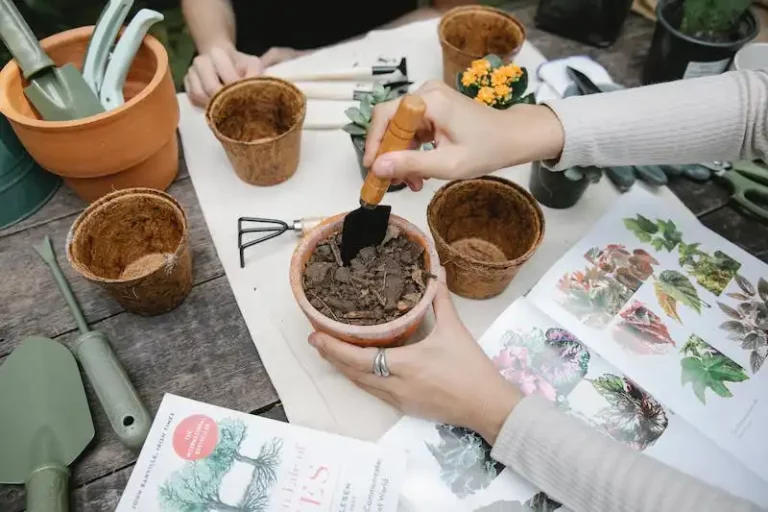Apple trees are susceptible to various diseases and pests that can cause significant damage to the fruit and overall health of the tree. It is important for apple tree owners to be familiar with these problems and know how to effectively treat them. By understanding the common diseases and pests that affect apple trees, you can take the necessary steps to prevent and control them, ensuring the health and productivity of your apple tree.
One common pest that poses a threat to apple trees is scale. These tiny insects attach themselves to the branches and trunks of the tree, sucking sap and causing weakening and yellowing of the leaves. Scale infestations can be severe, especially during the summer months when the insect population is high. It is important to identify and treat scale infestations early to prevent them from spreading to other trees in the orchard.
Another important consideration for apple tree owners is the prevention and control of diseases. Fungal diseases such as apple scab and cedar-apple rust can spread rapidly and cause defoliation and fruit damage. These diseases are caused by fungal spores that are carried by wind and rain. To prevent the spread of diseases, it is essential to regularly inspect and spray your apple trees with appropriate fungicides. Organic options like sulfur and copper sprays can be effective in controlling these diseases.
Understanding the specific diseases and pests that can affect your apple trees is crucial in developing an effective treatment plan. Regularly inspecting your trees for signs of trouble, such as dark spots on the leaves or gray mold on the fruits, can help you identify problems early on. If something does go wrong, consult your local agricultural extension office or do some research online to find the appropriate treatment.
Preventing diseases and pests is always better than treating them. To protect your apple trees, it is important to practice good orchard management techniques, such as proper pruning and sanitation. Removing and destroying infected leaves and prunings can eliminate potential sources of infection. Additionally, planting disease-resistant apple tree varieties can significantly reduce the risk of disease.
In conclusion, apple tree diseases and pests can be a significant challenge for orchard owners. However, by staying vigilant and taking the necessary precautions, you can effectively treat and prevent these issues. Regularly inspect your trees, understand the signs of trouble, and take action when necessary. By doing so, you can enjoy healthy and productive apple trees for many years to come.
10 Common Apple Tree Diseases
Apple trees are prone to a variety of diseases that can cause significant problems for growers. It’s important to know about these common diseases and how to treat them to ensure the health and productivity of your apple trees.
- Bacterial Diseases: There are several bacterial diseases that can affect apple trees, such as fire blight and bacterial canker. These diseases can cause wilting, cankers, and dieback in the branches.
- Powdery Mildew: This fungal disease is characterized by a white, powdery coating on the leaves, flowers, and fruit of the apple tree. It reduces photosynthesis and can weaken the tree.
- Black Rot: Another fungal disease, black rot affects the fruit and causes dark, sunken spots. It can also cause the fruit to shrivel and become mummified.
- Eastern Filbert Blight: This disease primarily affects hazelnut trees, but can also infect apple trees. It is caused by a fungus and can cause cankers on the branches, leading to dieback.
- Cedar Apple Rust: This fungal disease is common in areas where apple trees and cedar trees coexist. It causes bright orange spots on the leaves, fruit, and twigs of the apple tree.
- Phytophthora Root Rot: This soil-borne disease affects the roots of the apple tree and can lead to stunted growth, wilting, and eventual death of the tree.
- Codling Moth: This insect pest lays its eggs on the apple tree, usually on the calyx end of the fruit. The larvae tunnel into the fruit, causing damage and making the fruit inedible.
- Aphids: Aphids are tiny insects that feed on the sap of apple trees. They can cause distortion of new growth and transmit viruses to the tree.
- Apple Maggot: This fly lays its eggs in the apple fruit, and the maggots feed on the fruit flesh, causing it to become mushy and unappetizing.
- Apple Scab: Apple scab is a common fungal disease that affects the leaves, fruit, and twigs of the apple tree. It causes dark, scaly lesions and can cause the fruit to crack.
When dealing with these diseases, it’s important to refer to the label of any sprays or treatments you use. Applying the wrong spray or using the wrong dosage could do more harm than good. Sanitize your pruning tools between cuts to prevent the spread of disease. It’s also beneficial to slow down the growth of your trees to reduce the likelihood of infection. Shepherds University provides a helpful FAQ on dealing with common apple tree diseases in their newsletter.
By following a process of regular spraying, proper sanitation, and monitoring for any signs of disease, you can prevent and treat these common apple tree diseases and ensure the health of your apple trees.
Apple Scab
Apple scab is a common fungal disease that affects apple trees. It is caused by the fungus Venturia inaequalis and can cause significant damage to apple crops if not properly managed.
Apple scab typically appears as dark, scaly lesions on the surface of apple leaves, fruit, and sometimes even twigs. These lesions can vary in size and may be surrounded by a white halo. The disease can also cause the leaves to turn yellow and drop prematurely, leading to a loss of tree vigor and apple production.
Understanding the life cycle of the apple scab fungus is essential for effective control. The fungus overwinters on fallen leaves and in infected leaf litter, and in the spring, it produces spores that are spread by rain, wind, or insects. These spores can infect apple trees during wet conditions, especially when temperatures range from 50 to 75 degrees Fahrenheit.
To prevent and treat apple scab, it is important to follow cultural and horticultural practices. This includes keeping the area around the apple tree clean by removing fallen leaves and other potential sources of infection. Pruning the tree to improve air circulation and sunlight penetration can also help reduce the risk of infection.
Regularly spraying apple trees with fungicides is also recommended, particularly during periods of high disease pressure. Fungicides should be applied every 7 to 10 days starting in early spring when the buds begin to break and continue until summer or even early fall, depending on the severity of the disease. It is important to choose fungicides that are specifically labeled for apple scab control and to follow the manufacturer’s instructions for application.
In addition to fungicide sprays, there are some apple varieties that are more resistant to scab than others. By planting scab-resistant varieties in your orchard, you can reduce the risk of infection and minimize the need for chemical treatments.
It is also important to be aware of other apple tree diseases that can sometimes be mistaken for apple scab, such as bacterial blotch, powdery mildew, and cedar apple rust (caused by the Gymnosporangium fungus). These diseases require different management strategies, so it is crucial to correctly recognize the symptoms and seek professional advice if needed.
By understanding the life cycle of the apple scab fungus, practicing good cultural and horticultural techniques, and regularly monitoring and treating for the disease, you can protect your apple trees and promote healthy fruit production.
For more information on apple scab and other apple tree diseases, consult online resources or contact your local horticulture extension office for advice and assistance.
What Is Apple Scab
Apple scab is a common fungal disease that affects apple trees and can cause a range of problems. It is caused by the fungus Venturia inaequalis and can infect not only apples but also pears and other related trees.
The first signs of apple scab appear in the early spring when small olive-green or black lesions begin to form on the leaves, fruit, and sometimes on young twigs. These lesions can expand and become larger as the season progresses, forming brown or black scaly spots. The disease can also affect the blossom petals, resulting in a black, cork-like appearance.
The fungus that causes apple scab can survive throughout the winter in fallen leaves and infected fruit on the ground. It can also overwinter on infected twigs or in the soil. In the spring, when conditions are favorable, the fungus produces spores that are carried by wind or rain to infect new tissue.
Apple scab can be prevented and treated using a combination of cultural practices and fungicides. To prevent the disease, it is important to remove and destroy any infected leaves or fruit from the tree and the surrounding area. This should be done in the fall, before the fungus has a chance to overwinter and produce more spores.
During the dormant season, applying a horticultural oil or dormant spray can help smother and kill any overwintering spores. Fungicides can also be used during the growing season to protect the new foliage and fruit from infection.
It is important to note that some apple varieties are more susceptible to apple scab than others. If you are planning to plant apple trees, consider choosing a variety that is known to be resistant to the disease.
If you notice any signs of apple scab on your trees, it is important to act quickly to prevent the spread of the disease. Removing and destroying affected leaves, fruit, and twigs can help reduce the amount of inoculum in the area and prevent further infections.
It is also important to practice good sanitation in the orchard, keeping the area clean and free from fallen leaves and fruit. Avoid planting apple trees near cedar or hawthorn trees, as these can act as hosts for the apple scab fungus.
Apple scab can be a persistent problem, but with proper prevention and treatment, it can be managed effectively. If you are unsure how to treat apple scab or need help in identifying and controlling the disease, it is advisable to seek advice from a professional horticulturalist or a certified arborist.




